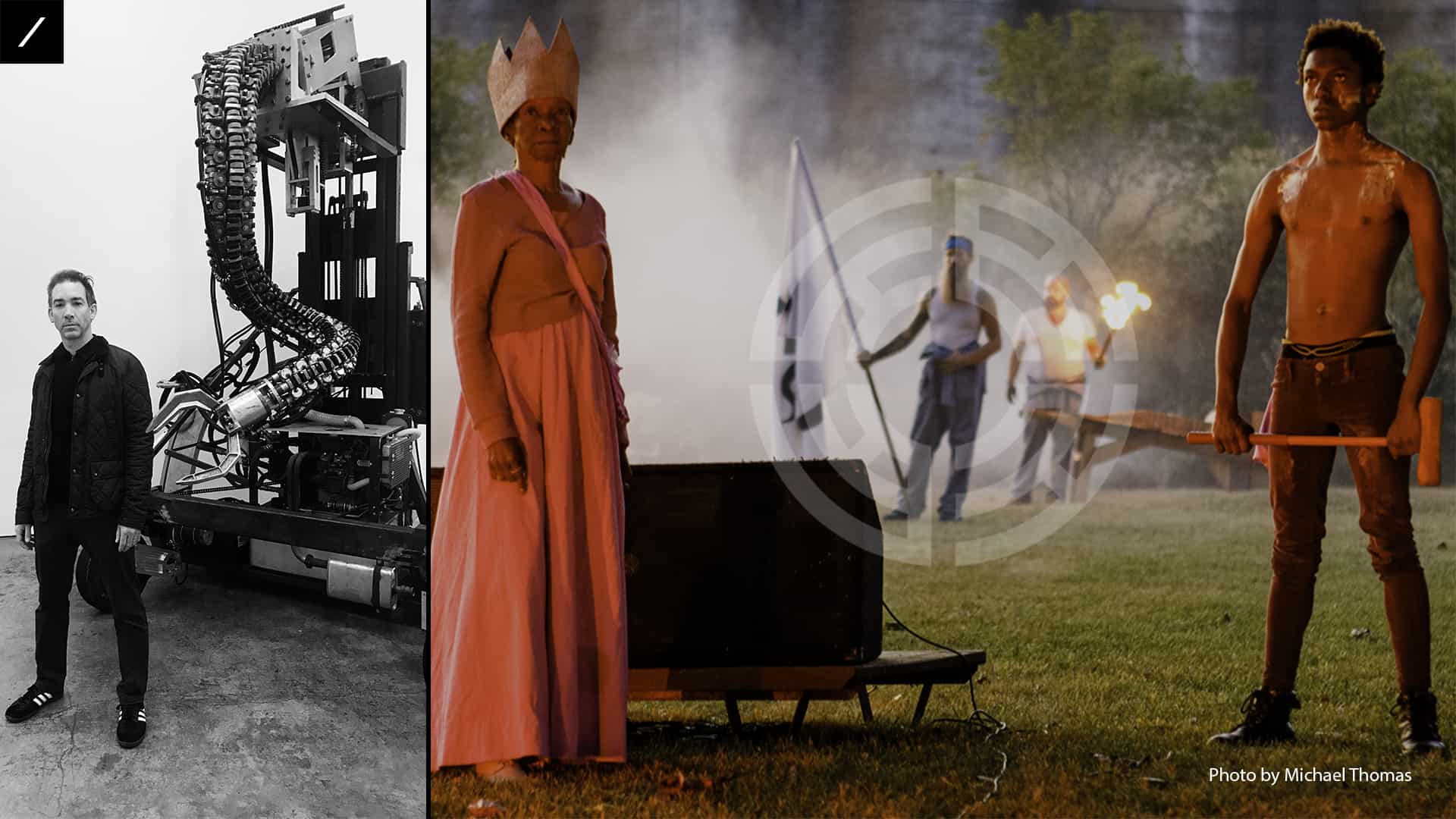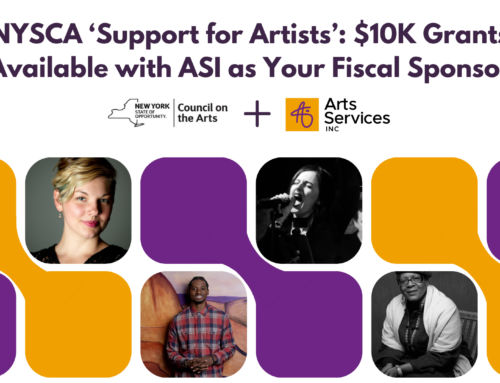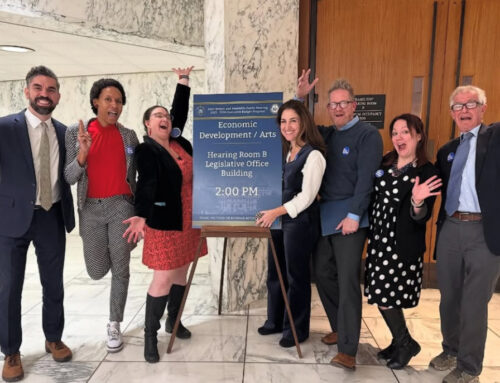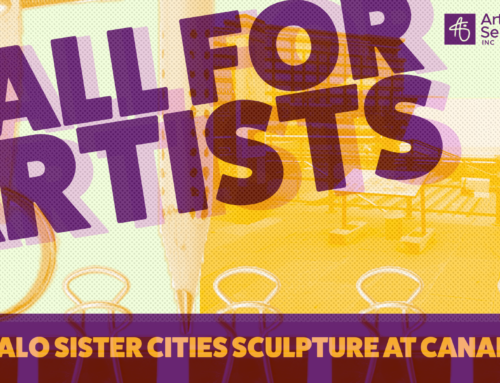Founded by Dan Shanahan and Melissa Meola, Torn Space Theater aims to create original, aesthetically innovative performances, and to introduce internationally-renowned, contemporary performance to Western New York and the Buffalo-Niagara Region.
For this month’s Accessibility in the Arts spotlight, we sat down with Torn Space’s Artistic Director and Founder Dan Shanahan to learn more about the organization and its vision for the future.
ASI: Tell me a little about the history of Torn Space Theater: When and how did it begin?
DS: Torn Space was founded in 2003 by Melissa Meola (then girlfriend and now wife) and myself. Although around 2001 we began developing works under the name Torn Space but it had not yet become an official organization. In the beginning we focused mostly on the European avant garde authors of post WW2. We started out in the back hall of The Adam Mickiewicz Dramatic Circle on Fillmore Ave. and that is where we are still housed. In 2006, the late great Russell Pawlak invited us to design a performance installation for the Central Train Terminal. The Terminal was just starting to open back up to the community and this was an opportunity to design an experience for a public returning back to or entering into for the first time, an iconic structure. This experience marked an important turn for the company. We began developing original works and works designed for specific architectural spaces. We started to learn how to work with installation artists and designers and fold that into production design, we began to understand how to develop an experience for an audience to walk into and we began to understand that performance is a ritual.
ASI: As a co-founder of the theatre, how has your education and background impacted and shaped your work, and the theatre’s mission?
DS: My earliest training was my interest in film. Growing up I did not have much opportunity to experience live art but I was fortunate as a kid to discover independent cinema; first with works by directors such as Gus Van Sant, David Lynch, Spike Lee and Richard Linklater then European cinema by directors like Fassbinder or Bergman. I majored in English Literature and thought I would become a journalist that would travel often and write about experiences . Around this time I began to become interested in painting and installation art. I was visiting friends in New York, visiting the galleries and small theaters and then studying still images of contemporary performance at the library. I was trying to figure out how to merge all these interest into something. This is what the theater came out of.
The theater was a messy, exciting, experiment for several years. We were all finding our way and thankfully there were people showing up to watch it. I understood for this to continue the work had to be created and delivered thorough an organizational structure. I received a Master’s in Arts Management and that became the next important step in my education for how to pull this all off.
ASI: In such an uncertain time, how has Torn Space been able to reach a diverse and inclusive audience?
DS: We created an audio performance titled Passage with our incredible sound designer Justin Rowland. The work could be accessed anywhere in the world, it was free. The work was being developed in March and in April when we all went into lock down and the work was presented in May when we were slowly, reluctantly going outside again. The work was for that moment when you would go for a walk alone (if you were fortunate to have open space to go) or experienced in a backyard, or porch or room and you were looking at the world in a very different way. Everything seemed heightened because, for many of us, we were inside a confined space for 8 weeks or more. The Spring was just starting and the piece reflected that. The work was experienced throughout the US and in Europe and we hope that reached people from many different backgrounds who wanted to experience the work for many different reasons..
ASI: Has there been a “victory” moment for Torn Space, where you have seen the direct impact of the theatre in the community?
DS: One in particular was our production Motion Picture, designed for the open field of Silo City that is lined by the grain elevators. We envisioned the production as the community attending a baseball game, or drive in movie, or lawn fete performance; seated on aluminum bleachers and on picnic blankets, watching a production that had military reenactors, an equestrian horseback rider, professional actors, nonprofessional actors with sound, video and light installation. The work was a patchwork of all these different talents, it was activating a site that at the time was just beginning, it was performed for people on a summer night who were stretched out with picnic baskets. It was a work that seemed to fit perfectly in its setting and it was being experienced by a perfect audience for that work at that time.
ASI: How have you needed to adapt in response to COVID-19? What are some of the challenges you’re facing? Have you been surprised by any unexpected advantages?
DS: The work we create happens through conversation, trial and error, working in an actual space with other people, sharing design ideas and prototypes, shaping and adjusting. This experience is fundamentally altered when you place this into zoom, dropbox and email. We are developing our first live performance since the pandemic. It is titled Silence, designed for the large open space of the meadow at Silo City and it will premiere July 31st. I think we have managed to this because our team has worked together for so long that we have a shorthand language that can’t be flattened by on-line prep conversations. “Advantages” is a difficult word to use for this moment. The advantage is a result of people being extremely resilient, people working through this moment, finding ways to stay connected and to work. The advantage is that the work is being created at a time when I think we all appreciate how important it is to work on projects with other people. In many ways this pandemic has wiped the slate clean; it is impossible to take for granted a social moment- a handshake, meeting a friend for a drink, having a level of spontaneity with how the day is planned. With this blank slate, the work, the moments, the exchanges become so heightened.
ASI: Are there any individuals, organizations, or programs within Western New York or beyond that have influenced or helped to shape your vision for Torn Space Theater? Is there anyone you’d like to shout out?
DS: I would like to give a shout out to our full team of designers and technical staff and performers, Board, and support staff and Managing Director Marissa Caruso, Marketing Director Tim Stegner and Associate Director Melissa Meola. This entire team allows us to function and move forward and I consider myself incredibly fortunate to have had an opportunity to develop work with them all.
Cullen Foundation has been essential for us to move the work in a new direction. Without their support we could not fund the work during this difficult time.
And there is The Adam Mickiewicz Dramatic Circle- our home for so long- and Silo City- a place like no other.
ASI: With regard to accessibility, diversity, and/or inclusion, what kinds of things would you like to see from arts and cultural organizations in Western New York? What can our community do better?
DS: From an arts and cultural perspective, we need to look at who is creating the work. Is the work being written, performed, developed by diverse voices? We need to adjust our missions if they are too narrow and exclude too many voices. Presenting to a diverse audience starts with creating diverse work that is meaningful to many different people. Then the work is to get the word out, lower barriers so people can access the work, and figure out how to create meaningful experiences for a wide range of our community. As a community we need to continue to increase investment in the culturals, we need to understand that the culturals are front and center for quality of life and we need to have the culturals at the table where the decisions are being made. The culturals cannot be a decorative add on to development, they need to be at the core center for how a community develops.
ASI: Where would you like to take Torn Space Theater next?
DS: Into a time where it is safe to be inside, without masks, experiencing live performance with other people.






